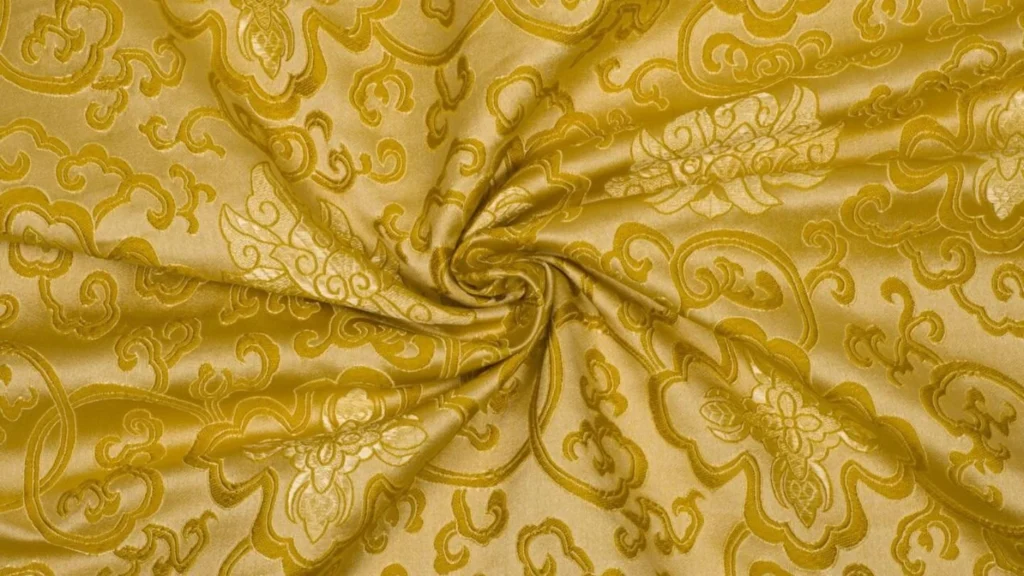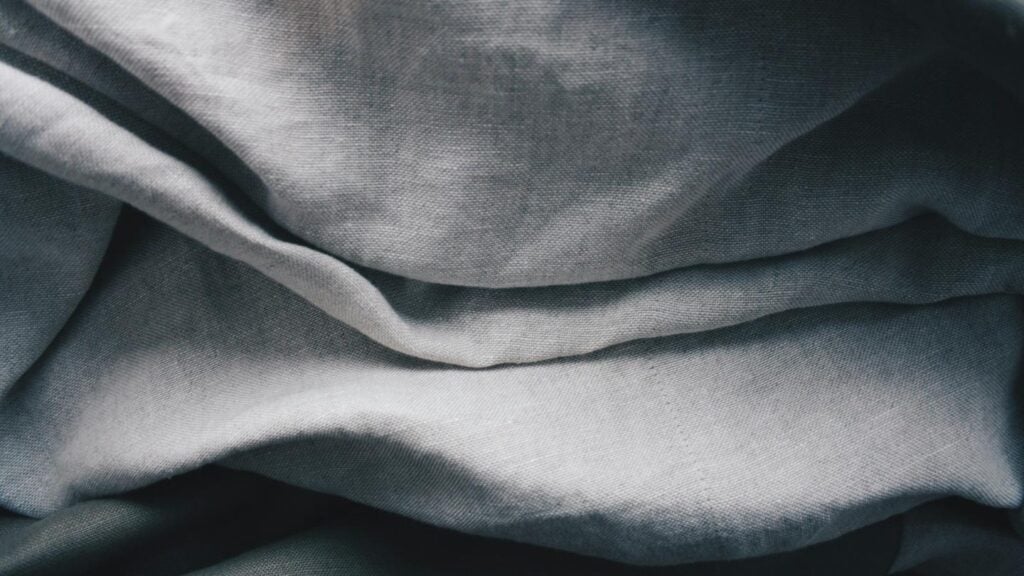2 – Elastane Fabric Composition
3 – Elastane Fabric vs Other Fabrics
4 – Elastane Fabric Is Manufactured
5 – Common Uses in Fashion
6 – Understanding the Environmental Impact of Elastane Fabric
7 – Exploring Price Points and Value for Money
8 – Conclusion
9 – FAQs
What is Elastane Fabric?
Elastane fabric, commonly known by its brand name Lycra or Spandex, is a synthetic textile known for its exceptional stretch and flexibility. It is a type of polymer fabric that can stretch up to five times its original length, making it highly versatile for various types of clothing. While often used in combination with other fibers like cotton, polyester, or nylon, Elastane’s standout feature is its ability to return to its original shape after stretching. This unique property gives Elastane fabric its characteristic comfort and fit, making it an essential component in many everyday garments.
Elastane was first developed in the 1950s by chemists at DuPont, offering a more durable and elastic alternative to rubber. Since then, it has become a cornerstone of modern fashion and sportswear. Today, Elastane is widely used in the production of activewear, swimwear, undergarments, and even casual clothing due to its ability to enhance the shape and support of garments.
Here’s why Elastane is a preferred choice in the textile industry:
- Stretchability: Elastane can stretch up to five times its original size, offering unparalleled flexibility and comfort.
- Shape retention: After being stretched, Elastane returns to its original form, providing a smooth, fitted look.
- Durability: The fabric resists wear and tear, making it long-lasting even with frequent use.
- Breathability: Despite its elasticity, Elastane fabric allows for moisture-wicking, keeping the wearer cool and dry.
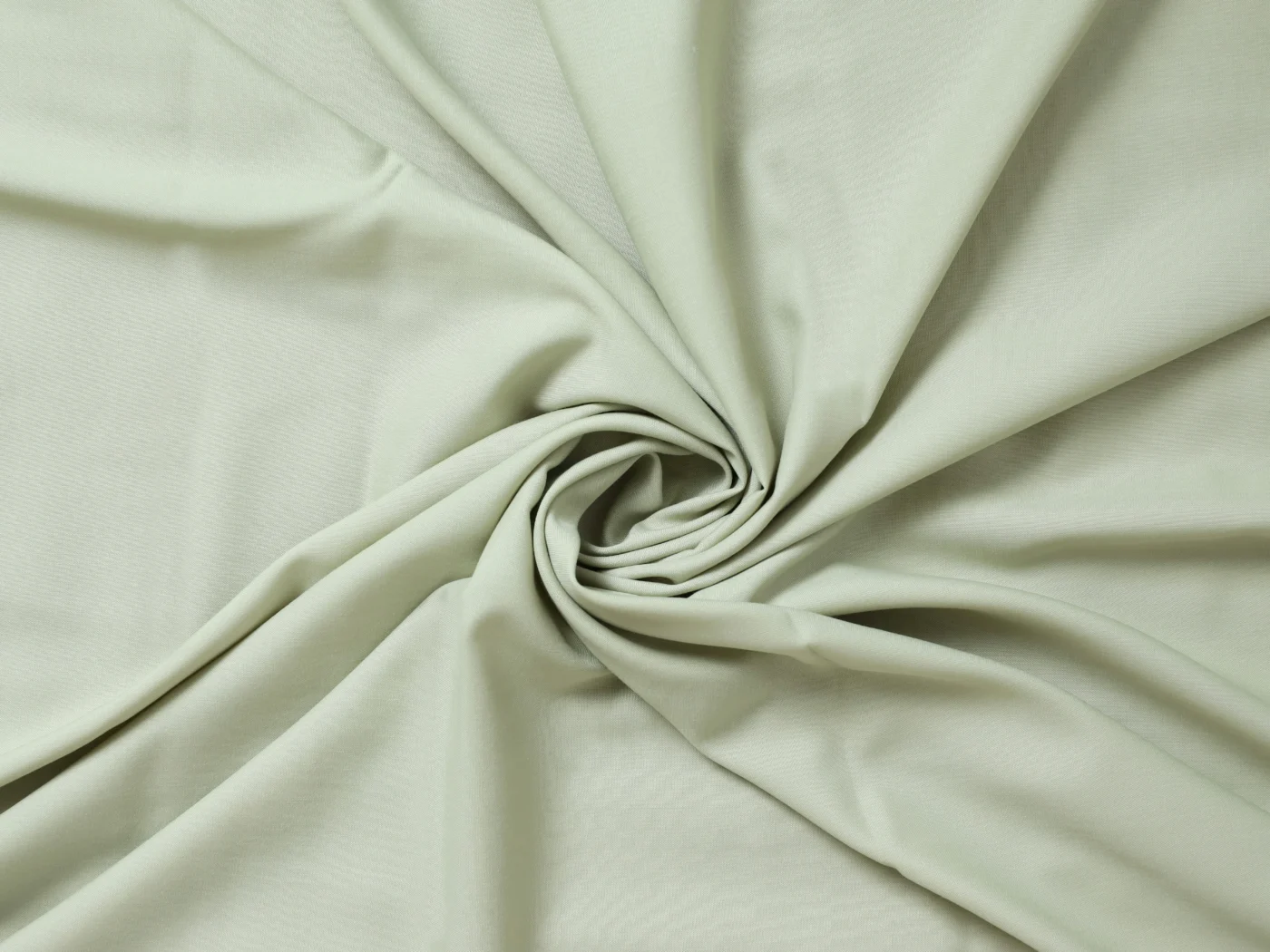
This fabric is a game-changer in garment design, combining comfort, support, and style, while providing durability and flexibility. Whether you’re wearing it for sports or casual wear, Elastane offers functionality without compromising on fashion.
Elastane Fabric Origin
Elastane fabric was invented in 1958 by DuPont chemist Joseph Shivers as a synthetic alternative to rubber. Initially branded as Lycra, it was developed to offer superior stretch, durability, and resilience. Unlike rubber, Elastane retains its elasticity and shape over time, making it ideal for clothing that requires flexibility, such as sportswear and activewear.
In the 1980s, the fabric gained widespread popularity, with brands like Lycra and Spandex becoming synonymous with form-fitting, high-performance clothing. Today, Elastane is produced by various companies and continues to be a key material in fashion, sports, and activewear.
Key points:
- Developed in 1958 by DuPont as a durable, stretchy alternative to rubber.
- Widely used in fashion and activewear for its flexibility and shape retention.
- Produced globally under different brand names like Lycra and Spandex.
Elastane’s innovative origins have cemented it as a crucial material in modern textiles.
Elastane Fabric Composition
Elastane fabric is made from polyurethane, a synthetic polymer that gives it exceptional stretchability. The fabric is created through a process called solution spinning, where the polymer is dissolved and spun into fibers. Elastane is often blended with other fibers, such as cotton, polyester, or nylon, to improve comfort, durability, and moisture-wicking properties.
Common Elastane blends:
- Elastane and Cotton: Soft and breathable with stretch.
- Elastane and Polyester: Durable and moisture-wicking.
- Elastane and Nylon: Strong and abrasion-resistant.
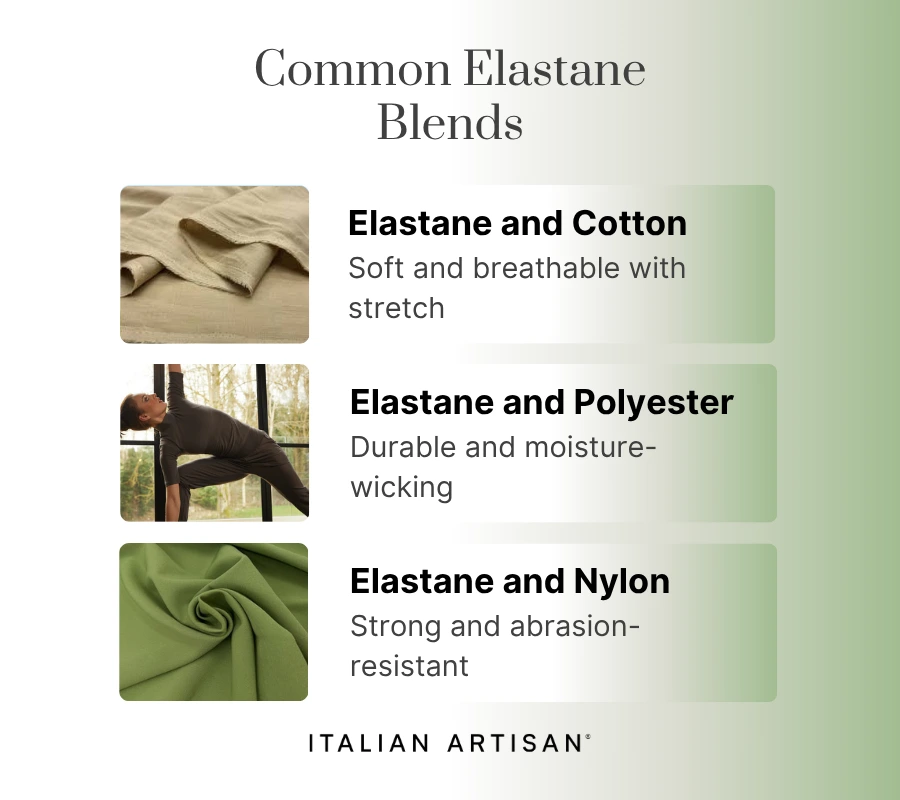
These blends enhance Elastane’s versatility, making it suitable for fashion, sportswear, and activewear.
Elastane Fabric vs Other Fabrics
Elastane is known for its unique stretchability, setting it apart from other fabrics:
- Elastane vs Cotton: Cotton is soft and breathable but lacks stretch. Blending with Elastane adds flexibility and a better fit.
- Elastane vs Polyester: Polyester is durable but not as stretchy. Elastane blends improve elasticity while maintaining durability.
- Elastane vs Spandex: Elastane and Spandex are essentially the same, with “Spandex” used in the U.S. and “Elastane” in Europe.
- Elastane vs Nylon: Nylon is strong and abrasion-resistant, but not stretchy. Blending with Elastane enhances flexibility and comfort.
In summary, Elastane adds stretch and shape retention to various fabrics, making it ideal for activewear and fashion.
How Elastane Fabric Is Manufactured
Elastane fabric is created through a process known as solution spinning. Here’s a simplified breakdown of the manufacturing steps:
- Polymer Creation: Elastane starts with a synthetic polymer called polyurethane, which is melted and dissolved in a chemical solution.
- Spinning: The dissolved polymer is then spun into thin fibers through a process called solution spinning. The fibers are stretched to enhance their elasticity.
- Drying and Solidifying: The fibers are dried and solidified, ensuring they maintain their stretch properties and strength.
- Weaving or Knitting: The fibers are then woven or knitted into fabric. Elastane is often blended with other fibers like cotton or polyester at this stage to create a versatile, stretchy material.
- Finishing: The fabric undergoes various treatments to improve texture, appearance, and durability, such as heat setting or adding finishes to enhance moisture-wicking capabilities
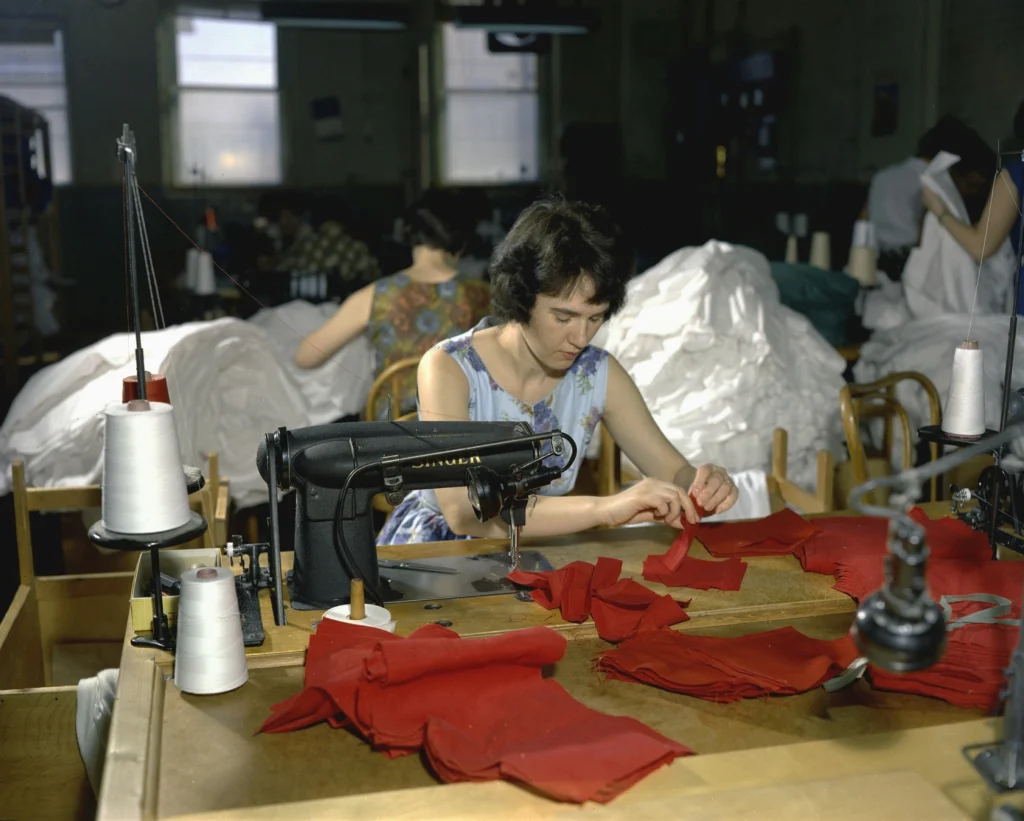
In summary:
- Solution spinning transforms the polymer into fibers.
- Blended with other materials like cotton or polyester during weaving or knitting.
- Final treatments ensure desired texture and performance for specific uses.
This process results in a fabric that combines stretch, comfort, and durability, making Elastane a key material in fashion and activewear.
Produce your fashion collection with us
Common Uses in Fashion
Elastane fabric is widely used in fashion for its flexibility, shape retention, and comfort. Some of its most common applications include:
- Compression Garments: Elastane is also used in medical clothing like compression socks and shapewear, where its stretch helps improve fit and provide support.
- Activewear: Elastane’s stretchability makes it ideal for sportswear, yoga pants, leggings, and gym clothing, providing both flexibility and support.
- Swimwear: Elastane is commonly blended with other fabrics to create swimwear that fits snugly, dries quickly, and allows for freedom of movement.
- Undergarments: From bras to underwear, Elastane is used to create garments that provide comfort, shape, and support without restricting movement.
- Jeans and Trousers: A small amount of Elastane blended with denim or other fabrics allows for a stretchy, form-fitting fit, making jeans more comfortable and flattering.
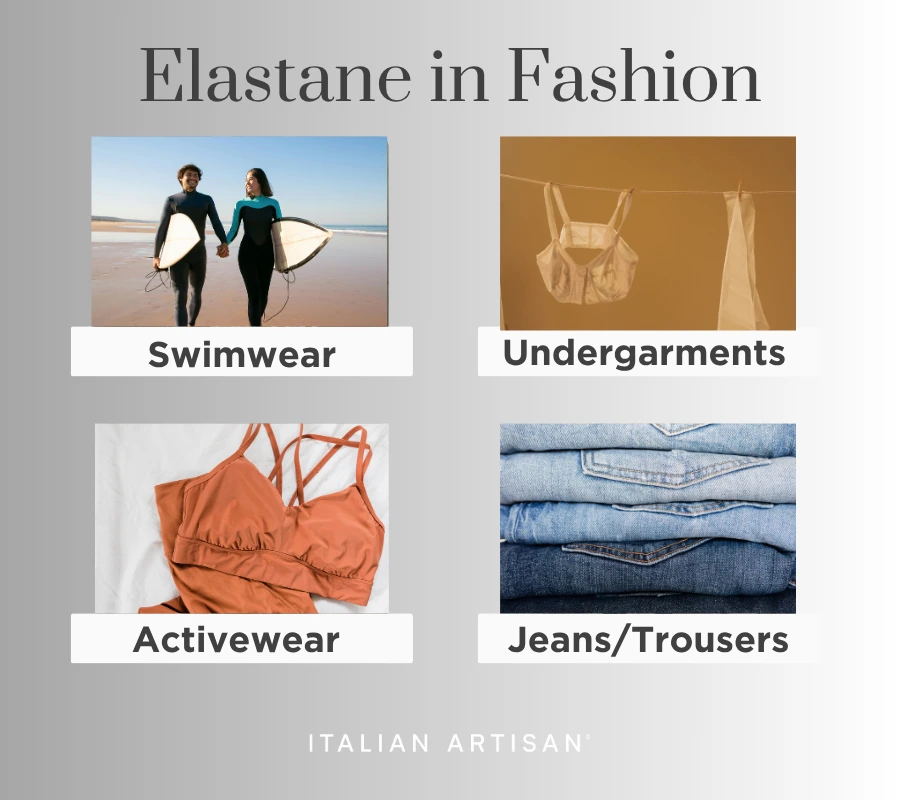
In summary:
- Activewear, swimwear, and undergarments benefit from Elastane’s stretch and comfort.
- Jeans and trousers incorporate Elastane for a flexible, form-fitting fit.
- Compression garments utilize Elastane’s support for improved comfort and performance.
Elastane’s versatility in these applications ensures a perfect blend of function, comfort, and style in modern fashion.
Understanding the Environmental Impact of Elastane Fabric
Elastane, being a synthetic fabric, has some environmental drawbacks:
- Non-biodegradable
- Energy-Intensive
- Can contain Microplastic
Efforts to mitigate these issues include:
- Recycling: Some brands are exploring ways to recycle Elastane.
- Blends with Natural Fibers: Combining Elastane with sustainable materials like organic cotton can reduce its environmental impact.
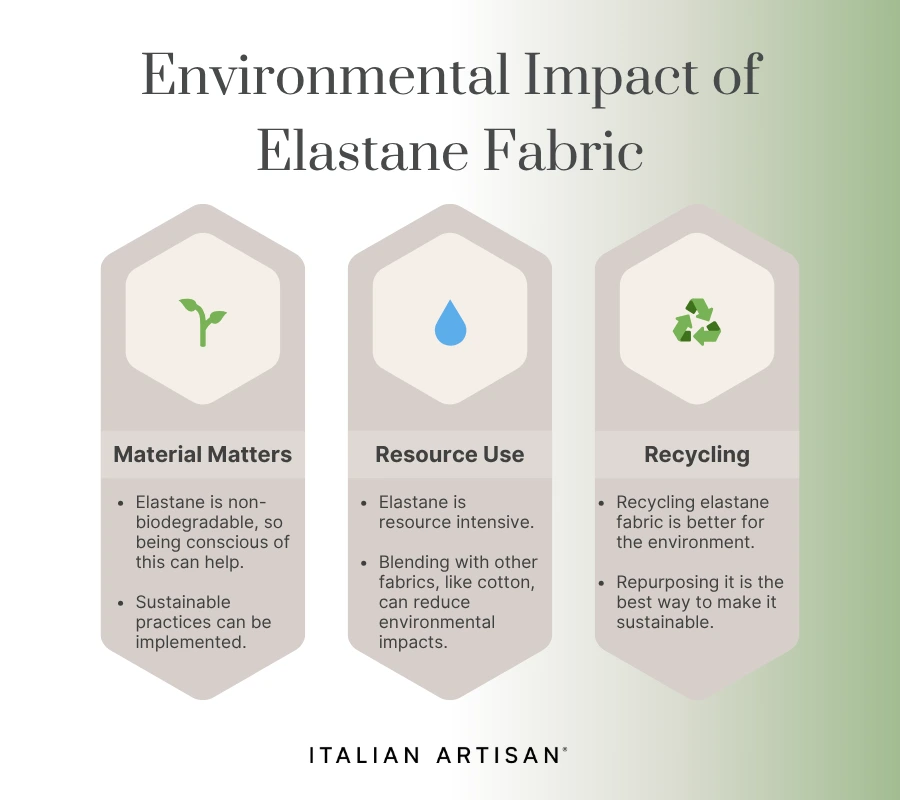
In summary, while Elastane offers excellent functionality, its environmental impact should be considered, especially regarding waste and pollution.
Exploring Price Points and Value for Money
Elastane fabric is generally affordable, but its price can vary depending on factors like quality, blend, and brand. Here’s an overview of what influences Elastane pricing:
- Fabric Quality: Higher-quality Elastane blends, such as those used in premium activewear or swimwear, tend to be more expensive due to their durability and performance features.
- Blend Composition: Elastane is often mixed with other fabrics like cotton, polyester, or nylon. The type of blend affects the price—premium blends tend to cost more.
- Brand and Technology: Elastane fabrics produced by well-known brands like Lycra or Spandex, often with advanced technology or added features (like moisture-wicking or UV protection), may come at a premium price.
Despite these variations, Elastane remains a cost-effective material for many applications, offering value for money due to its stretchability, durability, and comfort. It is a key component in affordable everyday garments as well as high-performance clothing.

In summary:
- Pricing varies based on quality, blend, and brand.
- Premium blends and branded Elastane fabrics come at a higher cost.
- Elastane offers good value due to its durability and flexibility.
Elastane’s price makes it an accessible option for a wide range of garments, from everyday wear to specialized performance attire.
Conclusion
Elastane fabric is known for its exceptional stretch, comfort, and durability, making it ideal for activewear, swimwear, undergarments, and fashion. While it has environmental concerns, such as non-biodegradability and microplastic pollution, efforts like recycling and sustainable blends are helping address these issues.
- Elastane provides stretch and shape retention for a wide range of garments.
- Environmental challenges are being tackled through innovation.
- Affordable and versatile, Elastane remains crucial in fashion and performance wear.
Elastane continues to be a valuable material in the textile industry, offering both functionality and affordability.
FAQs
1. What is Elastane fabric made of?
Elastane is made from polyurethane, a synthetic polymer known for its excellent stretchability. It is often blended with other fibers like cotton, polyester, or nylon to enhance its properties.
2. What is the difference between Elastane and Spandex?
Elastane and Spandex are essentially the same fabric. “Spandex” is the term used in the U.S., while “Elastane” is used in Europe.
3. Is Elastane fabric breathable?
Yes, Elastane blends are breathable, especially when combined with natural fibers like cotton. This makes it suitable for activewear and everyday clothing.
4. How do you care for Elastane fabrics?
Elastane fabrics are easy to care for. Machine wash in cold water, and avoid high heat when drying to prevent damage to the fabric’s elasticity.
5. Is Elastane eco-friendly?
Elastane is not biodegradable, and its production can have a significant environmental impact. However, sustainable practices like recycling and using eco-friendly blends are being explored.
6. Can Elastane be used in all types of clothing?
Elastane is most commonly used in activewear, swimwear, and form-fitting garments, but it can also be found in jeans, undergarments, and fashion items where stretch and comfort are desired.
7. Does Elastane lose its stretch over time?
No, Elastane is known for its durability and retains its stretch even after repeated use, making it a long-lasting fabric.
8. Is Elastane fabric expensive?
The cost of Elastane fabric can vary depending on the quality and blend. It is generally affordable, with premium versions costing more due to added features like moisture-wicking or UV protection.
9. Is Elastane fabric durable?
Yes, Elastane is highly durable and resistant to wear and tear, especially when blended with other strong fibers like nylon or polyester.
10. Can Elastane be recycled?
Recycling Elastane is challenging due to its synthetic nature, but some brands are working on innovative ways to recycle the fabric and reduce its environmental impact.




